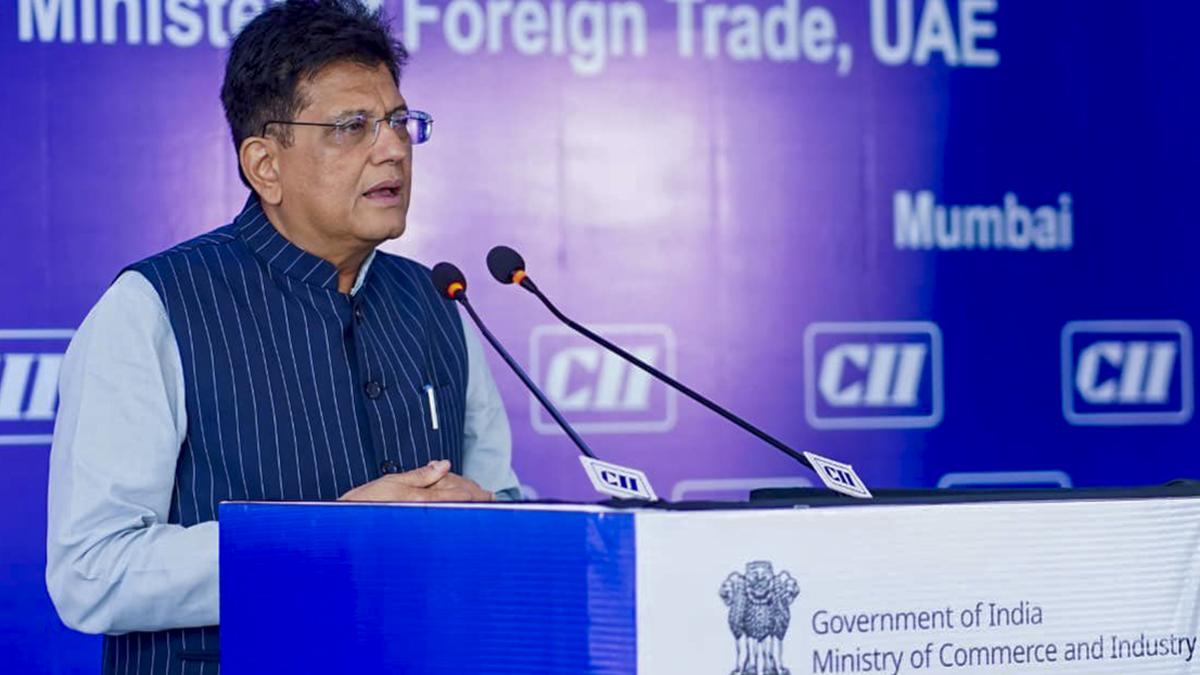Now Reading: India Inc Stays Local, Avoids Global Expansion Due to Market Comfort: Piyush Goyal
-
01
India Inc Stays Local, Avoids Global Expansion Due to Market Comfort: Piyush Goyal
India Inc Stays Local, Avoids Global Expansion Due to Market Comfort: Piyush Goyal

Fast Summary:
- Union Commerce Minister Piyush Goyal highlighted that Indian businesses often remain within the “cosy comfort zone” of india’s vast 1.4 billion-person domestic market rather than exploring global opportunities.
- Amid concerns over U.S. tariffs,Mr. Goyal emphasized India’s resilience and projected export growth for the year despite challenges. Over $46 billion of exports to the U.S. are unaffected by the tariff moves.
- The U.S.’s recent 50% tariff on Indian goods impacts sectors like textiles, gems & jewelry, shrimp, and leather; Mr. goyal acknowledged areas with low value addition, such as gems & jewellery (3%-4%), requiring increased efforts to minimize the economic impact.
- india’s GDP grew at a robust 7.8% in June 2025, serving as a “morale booster” against naysayers of India’s economy while reaffirming its position as one of the fastest-growing economies globally.
- Mr. Goyal criticized an over-reliance on commodity exports like rice or iron ore versus higher-value products such as ready-to-eat foods or high-quality steel and called for better branding strategies for Indian industries internationally.
- Speaking at a CII event in Mumbai alongside UAE ministers, Mr. Goyal pointed out several ongoing international trade agreements aimed at diversifying India’s trade basket amid adverse conditions brought by U.S tariffs.
- Prime Minister Modi instructed trust-building between government and businesses; Mr. Goyal invited industry leaders to collaborate fully with policymakers to overcome obstacles together.
Indian Opinion Analysis:
The statements from union commerce Minister Piyush Goyal underscore both strengths and structural inefficiencies within India’s economy during challenging global trade scenarios exacerbated by rising protectionism-highlighted here most notably in U.S tariffs on multiple key export sectors like textiles and shrimp.
India’s reliance on its expansive domestic market reflects strong internal consumption patterns but also risks stagnation if businesses fail to innovate or diversify globally beyond commodities smothered under limited value additions (e.g., raw rice vs finished food).Such initiatives could require coordinated policies emphasizing branding sophistication alongside deeper industrial R&D investments driving competitiveness abroad without sacrificing home-market roots.
Furthermore resilient rebound-backed projections&neutral diversified nexternal





















